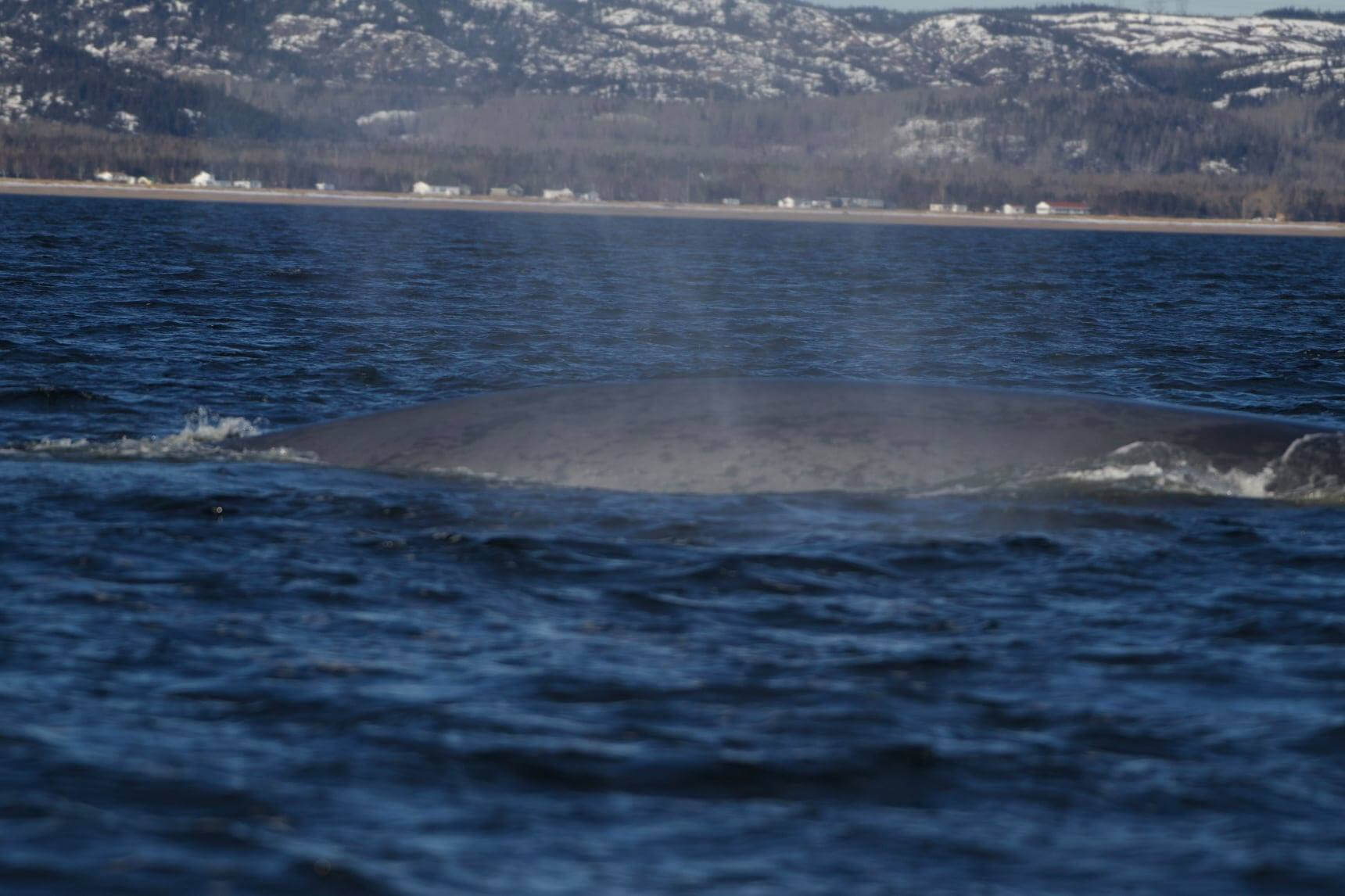Its bushy whiskers glisten in the afternoon sunlight. Its little head approaches a rock. For a minute or so, the seal struggles to climb atop the slippery boulder. “It seemed like forever; the animal seemed to be straining,” says the observer. Then, at last, the seal finds a suitable position and has a rest.
On its enormous body that probably weighs between 300 and 400 kilograms, the head appears quite small. Its abundant vibrissae – or whiskers, like those of a cat – intrigue the observer. She is watching a bearded seal (Erignathus barbatus)! But what is it doing in the Bay of Sept-Îles? This species usually lives in the Arctic and rarely ventures farther south than northeastern Newfoundland. However, every year, at least one bearded seal is seen in the St. Lawrence, sometimes as far away as Laval!
Plump as it is, no need to worry about this globetrotter. The bearded seal locates its prey in the seabed using its long whiskers. Its menu is made up of shrimp, clams, small fish and small octopuses. Will it linger in the St. Lawrence for a while, like the narwhal that has been here since 2016? Or will it return to its natural range in the Arctic? Either way, it really needs to rest. If you happen to see a seal on a rock, on an ice floe or on the beach, observe it from a good distance (at least 50 metres) to prevent it from fleeing into the water and not getting all the rest it needs.
Whales still plentiful
On December 5, a forest of spouts punctuates the landscape off Les Bergeronnes. With the naked eye, Renaud Pintiaux spots the exhalations rising like geysers several nautical miles offshore. Robert Michaud, scientific director at the Group for Research and Education on Marine Mammals (GREMM), aims his binoculars at the gathering of whales from the balcony of his home. He tallies seven to ten different humpbacks and three or four fin whales. The two whale enthusiasts have also been occasionally seeing a few minke whales pass by.
On December 8, it’s a herd of belugas that passes in front of Robert’s window. Our virtual work meeting is suddenly interrupted: when beauty is swimming right in front of your house, you have to soak it up!
Farther afield, off the coast of Sept-Îles, the blue whale B408 makes an appearance. “It came up to breathe every fifteen minutes or so before taking another dive,” comments Jacques Gélineau, collaborator for the Mingan Island Cetacean Study. On his sonar, he can see a mass at a considerable depth, probably the same swarm of krill that has caught the blue whale’s interest. For efficient feeding, the blue whale must target dense schools of krill. Researchers at Fisheries and Oceans Canada have even managed to estimate the density necessary to make every gulp taken by a blue whale worth the effort. Unfortunately, very few of the krill schools observed by the research team in the St. Lawrence (just 12% of arctic krill schools and 5.5% of northern krill schools) met this density.
Out in the Gaspé, recent weather conditions have been making observations difficult. However, on December 6, a hiker admires two humpbacks swimming off Cap Gaspé. Near Île Plate, a dozen or so harbour seals bask on the rocks under the watchful gaze of a snowy owl. What luck to see all three of these species at the same time. While harbour seals reside in the St. Lawrence year-round, most humpbacks have already gone south by this time, while snowy owls only spend the winter in these parts. For this bird, Quebec’s Gaspé and Côte-Nord region are considered the “south” and it will set off again for the Arctic once spring arrives. The overlap in the presence of these migrants is therefore quite brief.







